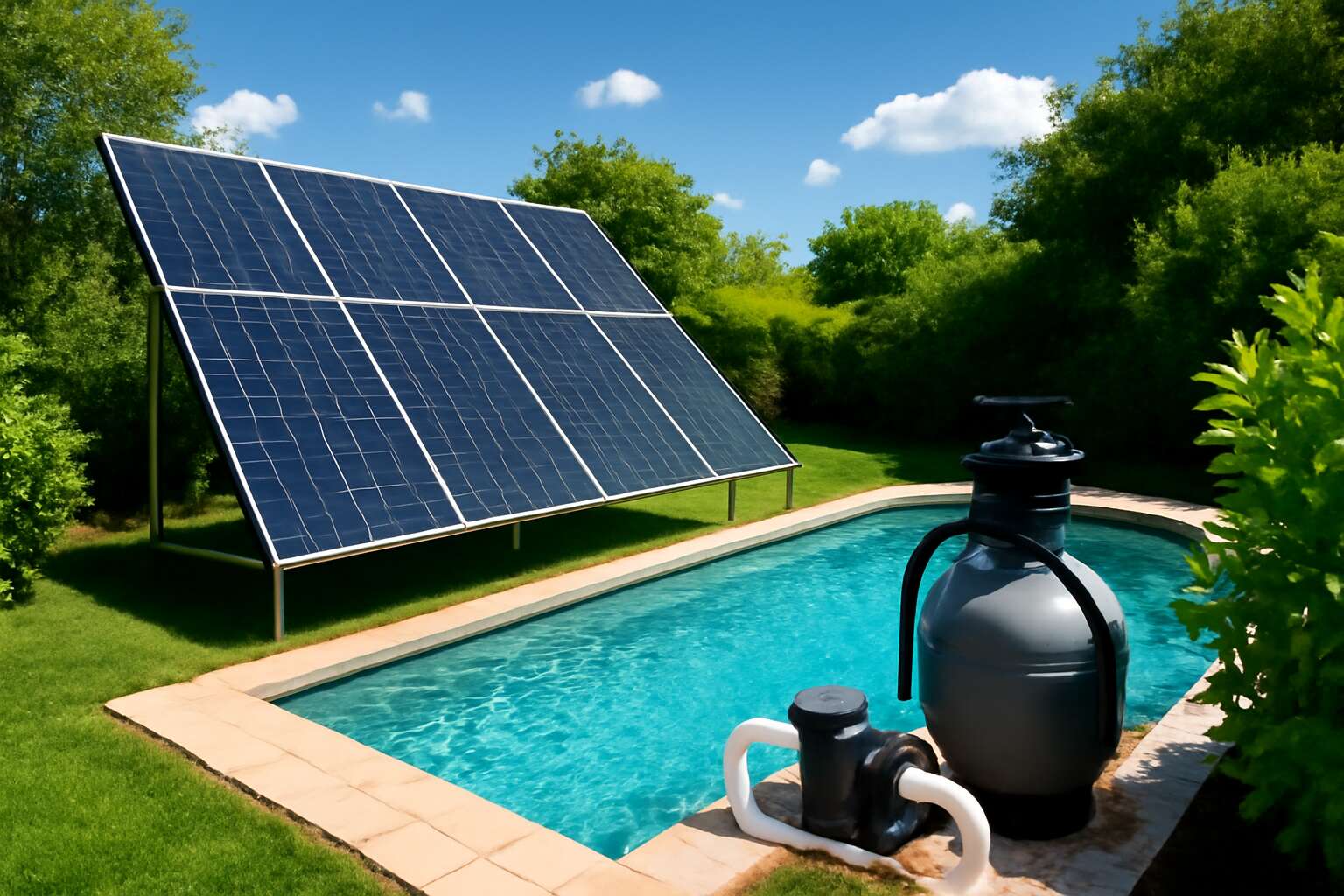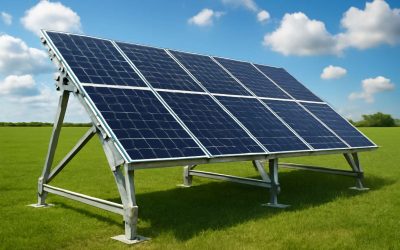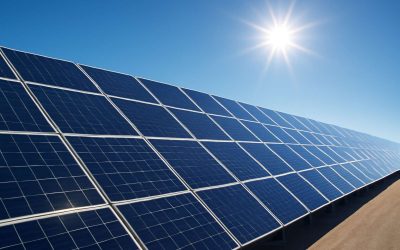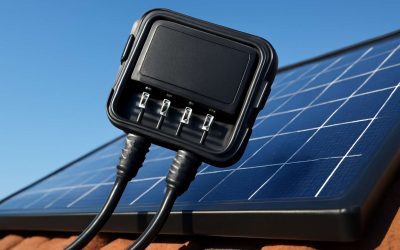Understanding Solar Panel Systems for Pool Pumps
Overview of Solar Power for Pool Pumps
Harnessing the power of the sun isn’t just a fantasy anymore—it’s a tangible solution for pool owners seeking sustainable efficiency. Solar panel systems designed to run pool pump are revolutionising how we think about energy consumption. With advancements in photovoltaic technology, these systems can generate enough power to keep your pool circulating effortlessly, even on cloudy days. The idea is simple: sunlight is converted directly into electricity, providing a clean, renewable energy source that reduces reliance on traditional power grids.
Understanding how a solar panel to run pool pump works is crucial. Typically, a dedicated solar array captures sunlight, which then feeds into an inverter or a battery storage system. This setup ensures your pool pump remains operational without interruption. For those contemplating a switch, it’s worth noting that the efficiency of these systems depends on factors like panel placement, shading, and local sunlight hours. Integrating a solar panel to run pool pump not only cuts long-term costs but also aligns with eco-conscious living—making it a choice as bold as it is practical!
How Solar Panels Work with Pool Pumps
Understanding how a solar panel to run pool pump works unveils a fascinating intersection of technology and sustainability. At its core, sunlight is captured by photovoltaic cells embedded within the solar panels, transforming solar energy into usable electricity. This process is not only efficient but also silent, making it an unobtrusive addition to your pool area. Once generated, the electricity flows directly to power your pool pump, ensuring continuous circulation without relying on the grid.
For optimal performance, the placement of solar panels is crucial. Panels should be installed in an area that receives maximum sunlight exposure throughout the day, free from shading or obstructions. Some systems incorporate batteries, storing excess energy generated during sunny hours, so your pool pump can operate seamlessly even on cloudy days. The real magic lies in the simplicity of the system, which can be understood through a few key components:
- Solar panels capturing sunlight
- Inverter converting DC to AC electricity
- Battery storage (optional but beneficial)
- Pool pump powered directly by solar energy
Benefits of Using Solar Energy for Pool Maintenance
Understanding solar panel systems for pool pumps reveals a compelling blend of innovation and practicality. These systems harness the sun’s energy to power your pool pump, reducing reliance on traditional electricity and cutting operational costs. The core of such a system typically includes solar panels, an inverter, and optional battery storage, all working together to deliver clean, renewable energy. With advancements in photovoltaic technology, a solar panel to run pool pump setup has become more efficient and accessible for homeowners seeking sustainable solutions.
One of the key advantages of using a solar panel to run pool pump is the significant decrease in energy bills. Since pools require consistent filtration, switching to solar power ensures continuous operation without escalating electricity costs. Moreover, this approach has positive environmental implications, reducing carbon emissions and dependency on fossil fuels. For many, the real appeal lies in the simplicity and low maintenance of solar systems—once installed, they require minimal intervention and provide silent, reliable performance.
In fact, integrating a solar panel to run pool pump often involves considering aspects like shading, panel placement, and system size. Proper positioning ensures maximum sunlight exposure, which directly influences the system’s efficiency. For those who opt for battery storage, excess energy generated during peak sunlight hours can be stored, maintaining pool circulation even during overcast days. This flexibility makes solar-powered pool pumps an attractive option for sustainable pool maintenance, offering both financial savings and eco-conscious benefits.
Choosing the Right Solar Panel System for Your Pool
Types of Solar Panels Suitable for Pool Pumps
Choosing the right solar panel system for your pool requires more than just selecting the most visually appealing panels; it involves understanding the subtle nuances of solar technology that align with your pool’s unique needs. When considering a solar panel to run pool pump, it’s essential to evaluate the type of solar panels that will deliver optimal efficiency and durability.
Polycrystalline panels, with their affordability and reliable performance, are often a popular choice for powering pool pumps. However, monocrystalline panels, recognised for their superior efficiency and sleeker aesthetics, can be ideal for those seeking longevity and high output. Additionally, the technology of bifacial panels, which capture sunlight from both sides, offers a compelling advantage for large pools or areas with reflective surfaces.
For pool owners aiming to harness solar energy seamlessly, understanding the distinctions among these solar panels can transform a simple decision into a strategic investment—ensuring your pool remains pristine under the sun’s gentle watch.
Factors to Consider When Selecting Solar Panels
Securing the perfect solar panel to run pool pump operations isn’t merely a matter of aesthetics; it’s an art of balancing efficiency, durability, and budget. With the sun’s rays acting as the silent benefactor, selecting a system tailored to your pool’s unique demands can transform a mundane upgrade into a masterstroke of sustainability. A common misconception is that all solar panels are created equal—nothing could be further from the truth.
Factors such as the size of your pool, the intensity of sunlight in your locale, and your long-term energy goals all play pivotal roles in this decision. For instance, larger pools with extensive surface areas might benefit from bifacial panels, which capture sunlight from both sides, maximising energy absorption. Meanwhile, homeowners seeking a sleek, high-efficiency solution often lean towards monocrystalline panels, which deliver superior output and a streamlined aesthetic.
- Assess your pool’s size and energy requirements
- Evaluate your local climate and sunlight exposure
- Consider the longevity and warranty of the solar panel to run pool pump
Ultimately, choosing the right solar panel for your pool isn’t just about harnessing the sun; it’s about making a strategic investment that ensures your aquatic oasis remains pristine and powered by the gentle, inexhaustible energy of the sun.
Sizing Your Solar Panel System for Pool Pump Efficiency
Choosing the right solar panel to run your pool pump hinges on understanding your pool’s specific needs. An underpowered system can leave your pool less pristine, while an oversized setup might be an unnecessary expense. Accurate sizing ensures your solar energy system operates efficiently, saving you money in the long run.
Assess your pool’s volume, daily pump requirements, and average sunlight exposure to determine the appropriate size. For larger pools, a more robust system with higher wattage capacity will be essential. Conversely, smaller pools can often be maintained with a compact, high-efficiency solar panel to run pool pump effectively.
Remember, the effectiveness of your solar setup also depends on the local climate. Areas with consistent sunlight will require fewer panels, while overcast regions might need a larger array to compensate for lower insolation. Ultimately, matching your pool’s demands with the right size of solar panel to run pool pump is a strategic decision—one that balances cost, efficiency, and longevity.
Installation and Setup of Solar Panels for Pool Pump Operation
Step-by-Step Installation Process
Installing a solar panel to run pool pump systems isn’t just about connecting wires; it’s an intricate dance of precision and foresight. The process begins with selecting an optimal location—ideally a place that maximises sun exposure throughout the day, free from shadows cast by trees or nearby structures. Proper mounting is crucial; panels must be securely fixed at an angle that captures the most sunlight, which varies depending on your geographic location.
Once the physical setup is complete, the next step involves electrical connections. Typically, a dedicated inverter is integrated to convert sunlight into usable energy for your pool pump. At this stage, it’s wise to follow a step-by-step installation process, such as:
- Positioning the solar panels in the sunniest spot.
- Mounting panels securely using brackets or frames.
- Connecting the panels to the inverter and battery storage if applicable.
- Linking the inverter to your pool pump’s control system.
This meticulous setup ensures your solar panel to run pool pump functions efficiently, maximising energy savings and reducing environmental impact.
Location and Mounting Tips
Choosing the right location for your solar panel to run pool pump is the foundation of a successful solar setup. Ideally, position the panels where they will receive direct sunlight for the majority of the day, free from shadows cast by trees or neighbouring structures. A clear, unobstructed space not only enhances energy absorption but also ensures the longevity of your investment. Consider the angle of the panels carefully—adjusting them to match your geographic latitude can significantly boost their efficiency.
Mounting your solar panels securely is equally vital. Use sturdy brackets or frames designed to withstand local weather conditions, and tilt the panels at an optimal angle. This setup maximises sunlight capture and prevents any accidental dislodgement during storms or high winds. For added peace of mind, some homeowners opt for adjustable mounting systems, allowing seasonal modifications to maintain peak performance.
Electrical Connections and Safety Precautions
Installing a solar panel to run pool pump systems requires careful attention to electrical connections and safety precautions. First, always switch off the main power supply before beginning any work. Proper wiring is essential to prevent electrical faults and ensure efficient operation. Use weatherproof connectors and conduits to protect all connections from moisture and debris, which can compromise safety and performance. It’s advisable to employ a qualified electrician familiar with solar power systems to handle the setup. They can verify that the wiring complies with local regulations and safety standards.
For optimal safety and efficiency, consider implementing a dedicated inverter designed for solar pool pump setups. This device converts DC power from the solar panels into AC, making it compatible with your pump. Additionally, incorporating a solar charge controller can prevent overcharging and extend the lifespan of your system. Keep in mind that proper grounding and surge protection are non-negotiable. These measures safeguard both your equipment and your household, ensuring that your solar panel to run pool pump system operates smoothly and reliably under all weather conditions.
Cost Analysis and Budgeting
Initial Investment and Equipment Costs
Investing in a solar panel to run pool pump isn’t just a savvy eco-move; it’s a financial one that can save a small fortune over time. However, before you dive into the shimmering waters of solar savings, understanding the initial investment and equipment costs is essential. The upfront expense varies considerably depending on the size of your pool and the efficiency of the solar panel to run pool pump system you choose. While some setups require a modest outlay, others—especially those designed for larger pools—may demand a more substantial financial commitment.
Typically, the cost involves not just the solar panels themselves but also additional equipment like inverters, mounting systems, and wiring. To keep things transparent, here’s a quick breakdown of what the budget might look like:
- Basic solar panel kit: £1,500 – £3,000
- Inverter and electrical components: £500 – £1,000
- Installation and mounting: £1,000 – £2,500
Ultimately, calculating the total cost is about weighing these initial expenses against the long-term savings on electricity bills. While the upfront investment may seem daunting, the payoff in reduced energy costs and environmental impact makes it a compelling choice for those serious about harnessing the power of the sun to run their pool pump efficiently and sustainably.
Potential Savings on Energy Bills
In the shadowed corridors of sustainable innovation, the true cost of a solar panel to run pool pump often remains cloaked in mystery. While the initial investment can seem formidable, it is a gateway to formidable savings—an escape from the relentless grip of rising energy bills. The long-term financial boon is undeniable: reduced electricity costs, diminished environmental impact, and a step closer to autonomous pool maintenance.
To fathom the potential savings, consider the ongoing expense of traditional power sources versus the sun’s silent bounty. For many, the decision hinges on a delicate balance between upfront expenditure and future dividends. A well-calibrated solar panel system can slash energy bills by up to 70%, transforming the once daunting investment into a wise, enduring choice.
Here’s a glimpse into the budgeting potential: for a modest setup, initial costs may hover around £2,000, but the savings on annual energy bills can surpass this figure within just a few years. As the sun’s rays continue to fuel your pool pump, the cumulative savings grow—an elegant testament to the power of solar energy to run pool pump systems efficiently and sustainably.
Return on Investment and Payback Period
In the shadowy realm of sustainable aquatic maintenance, understanding the cost analysis and return on investment for a solar panel to run pool pump is crucial. While the initial expenditure may seem daunting—averaging around £2,000 for a modest setup—the true measure lies in the long-term savings. Over several years, the consistent harnessing of sunlight can slash your energy bills dramatically, often by up to 70%. This isn’t merely a financial decision; it’s an act of rebellion against the relentless surge of traditional energy costs.
Calculating the payback period becomes an exercise in patience and foresight. Typically, homeowners witness a return on investment within 3 to 5 years, as the savings steadily accumulate. The beauty of a well-calibrated solar panel to run pool pump system is that once installed, the ongoing costs diminish to almost nothing—fueling your pool with the silent, eternal energy of the sun. The initial investment may be the gatekeeper, but the ensuing savings are the true reward, transforming your pool maintenance into a sustainable symphony of sunlight and serenity.
Maintenance and Troubleshooting of Solar Pool Pump Systems
Routine Maintenance Tips
Maintaining a solar panel to run pool pump system is an exercise in patience and precision, demanding more than a cursory glance at the equipment. Regular inspection ensures that the system remains at peak performance, preventing minor issues from snowballing into costly repairs. Dirt, debris, and algae can compromise the efficiency of solar panels, so a routine cleaning with a soft brush or gentle cloth is essential—never underestimate the power of a pristine surface to maximise sunlight absorption.
Troubleshooting often involves checking connections and ensuring that the pump’s flow rate remains consistent. If your pool pump isn’t functioning optimally, consider inspecting the inverter and electrical wiring for corrosion or loose fittings. A common pitfall is shading from overgrown foliage or debris, which can drastically diminish the effectiveness of your solar panel to run pool pump.
For ongoing performance, I recommend implementing a simple maintenance schedule:
- Monthly visual inspections of the solar panel to ensure clarity and cleanliness.
- Quarterly checks on electrical connections and system components.
- Annual professional servicing to evaluate system integrity and performance metrics.
By attending to these details with diligence, you ensure that your solar-powered pool system remains resilient and efficient, transforming a simple energy source into a cornerstone of sustainable leisure.
Common Issues and How to Fix Them
Even the most reliable solar panel to run pool pump systems can encounter issues over time. Common problems such as reduced flow rate or inconsistent operation often stem from simple causes. Dirt, debris, or algae accumulation on the solar panels can significantly diminish sunlight absorption, leading to decreased efficiency. Regular cleaning with a soft brush or cloth can prevent this, ensuring maximum energy transfer.
Electrical connections are another frequent culprit. Corrosion or loose fittings can disrupt power flow, so inspecting wiring and the inverter periodically is crucial. If your pool pump isn’t running as it should, check that shading from overgrown foliage isn’t blocking sunlight — shading can cut the system’s effectiveness by half or more!
For quick troubleshooting, follow these steps:
- Inspect the solar panel surface for dirt or debris and clean if necessary.
- Examine electrical connections for corrosion or looseness.
- Verify that no shading obstructs the solar panel to run pool pump.
- Check the flow rate of the pump to ensure it’s consistent.
Addressing these issues promptly keeps your solar-powered pool system running smoothly, helping you enjoy a pristine pool with minimal energy costs. Routine maintenance and attentive troubleshooting are key to long-term success with your solar panel to run pool pump setup.
Monitoring System Performance
Monitoring system performance is the secret sauce to keeping your solar panel to run pool pump operating at peak efficiency. Regularly checking the output and flow rates helps identify any dips in performance that could be caused by minor issues before they turn into costly repairs. A well-maintained system isn’t just about longevity; it’s about ensuring your pool stays pristine with minimal fuss.
To keep tabs on your setup, consider using a simple monitoring device or app — some models even send alerts if the system detects anomalies. This allows you to act swiftly, whether it’s cleaning a dirty panel or tightening loose wiring. Remember, a little vigilance can save you a lot of hassle later on.
If you notice a drop in energy transfer or inconsistent pump operation, inspecting the solar panel to run pool pump for shading or debris buildup is a good starting point. Clearing away leaves or algae, which can cut sunlight absorption by up to 50%, can instantly boost performance. Regular visual checks and system audits are your best friends in this endeavour. Keeping your solar system in tip-top shape ensures it continues to deliver energy-efficient, eco-friendly swimming season after season.
Environmental Impact and Sustainability Benefits
Reducing Carbon Footprint with Solar Power
Harnessing the sun’s silent energy isn’t just a practical choice—it’s a poetic act of rebellion against environmental degradation. When you choose a solar panel to run pool pump, you’re embracing a path that diminishes your carbon footprint and nurtures the planet’s delicate balance. Solar power systems emit no harmful greenhouse gases, making them a beacon of sustainability in a world increasingly aware of ecological urgency.
By reducing reliance on fossil fuels, solar panels transform your pool maintenance into an eco-friendly ritual. This shift not only preserves natural resources but also contributes to cleaner air and healthier ecosystems. Imagine a world where every splash in your pool echoes the promise of a greener future—each solar-powered pump working quietly to sustain your aquatic oasis while safeguarding the environment.
In fact, adopting solar energy for pool pumps aligns with broader sustainability benefits, such as conserving water and reducing energy consumption. Opting for a solar panel to run pool pump is more than an investment in your backyard; it’s a commitment to environmental stewardship. With every sunbeam captured, we take a step closer to a sustainable tomorrow—one pool at a time.
Contributing to Eco-Friendly Pool Management
Harnessing the sun’s radiant power through a solar panel to run pool pump systems doesn’t merely revolutionise pool maintenance — it ignites a profound commitment to environmental stewardship. Every ripple in your pool becomes a testament to sustainable living, reducing reliance on fossil fuels and curbing greenhouse gas emissions. The environmental impact of adopting solar energy is monumental; it transforms your backyard into a sanctuary that champions ecological balance.
By integrating a solar panel to run pool pump, you actively contribute to a greener planet. This choice promotes sustainability benefits such as conserving water through efficient circulation and lowering overall energy consumption. As solar technology continues to evolve, its role in eco-friendly pool management becomes even more pivotal, paving the way for a future where every splash echoes with eco-conscious intent.
Government Incentives and Rebates
The environmental impact of incorporating a solar panel to run pool pump systems extends far beyond mere energy savings. By harnessing the sun’s abundant power, homeowners actively participate in reducing greenhouse gas emissions and decreasing reliance on fossil fuels. This shift not only benefits the planet but also fosters a sense of ecological responsibility that resonates through every ripple and wave in your backyard oasis.
Sustainable living is increasingly attainable thanks to government incentives and rebates designed to encourage the adoption of solar technology. These programmes can significantly offset the initial investment, making the decision to install a solar panel to run pool pump more financially accessible. In many regions, you may find:
- Tax credits that reduce upfront costs
- Rebates offered by local authorities or utility companies
- Reduced property taxes in some areas for renewable energy installations
Such incentives not only accelerate the transition towards eco-friendly pool management but also amplify the long-term savings. Embracing solar energy underscores a commitment to sustainability that transcends mere utility bills, transforming your pool into a beacon of environmental stewardship.




0 Comments